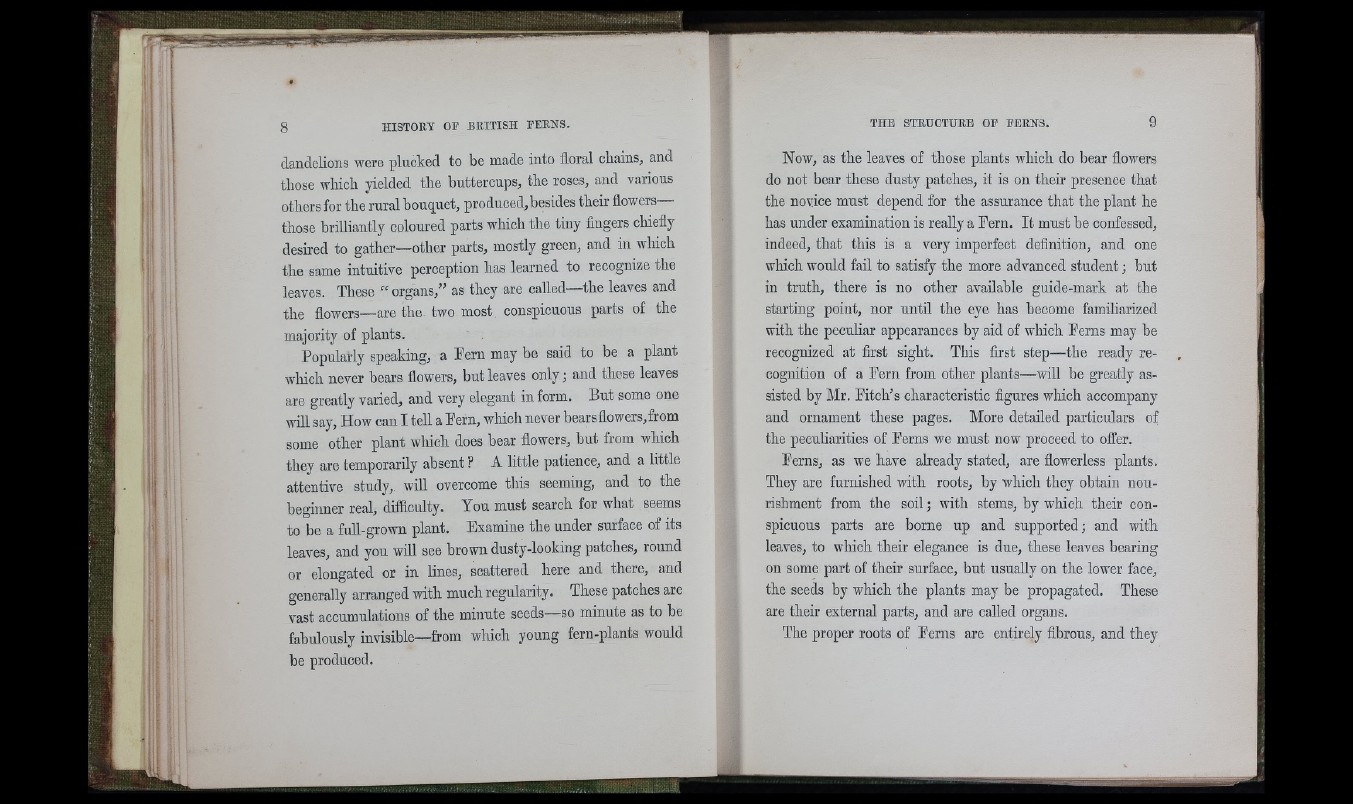
HISTORY OF BRITISH FERNS.
dandelions were plucked to be made into floral chains, and
those which yielded the buttercups, the roses, and various
others for the rural bouquet, produced, besides their flowers
those brilliantly coloured parts which the tiny fingers chiefly
desired to gather—other parts, mostly green, and in which
the same intuitive perception has learned to recognize the
leaves. These “ organs,” as they are called—the leaves and
the flowers-are the two most conspicuous parts of the
majority of plants.
Popularly speaking, a Peru may be said to be a plant
which never bears flowers, but leaves only; and these leaves
are greatly varied, and very elegant in form. But some one
will say. How can I tell a Pern, which never bearsflowers,from
some other plant wHch does bear flowers, but from which
they are temporarily absent ? A little patience, and a little
attentive study, will overcome this seeming, and to the
beginner real, diflicnlty. Yon must search for what seems
to be a full-grown plant. Examine the under surface of its
leaves, and yon will see brown dusty-looking patches, round
or elongated or in lines, scattered here and there, and
generally arranged with much regularity. These patches are
vast accumulations of the minute seeds—so minute as to be
fabulously invisible—from which young fern-plants would
be produced.
Now, as the leaves of those plants which do bear flowers
do not bear these dusty patches, it is on their presence that
the novice must depend for the assurance that the plant he
has under examination is really a Fern. It must he confessed,
indeed, that this is a very imperfect definition, and one
which would fail to satisfy the more advanced student; but
in truth, there is no other available guide-mark at the
starting point, nor until the eye has become familiarized
with the peculiar appearances by aid of which Eerns m_ay be
recognized at first sight. This first step—the ready recognition
of a Eern from other plants—will be greatly assisted
by Mr. Eitch’s characteristic figures which accompany
and ornament these pages. More detailed particulars of
the peculiarities of Perns we must now proceed to offer.
Eerns, as we have already stated, are flowerless plants.
They are furnished with roots, by which they obtain nourishment
from the so il; with stems, by which their conspicuous
parts are borne up and supported; and with
leaves, to which their elegance is due, these leaves bearing
on some part of their surface, but usually on the lower face,
the seeds by which the plants may be propagated. These
are their external parts, and are called organs.
The proper roots of Eerns are entirely fibrous, and they